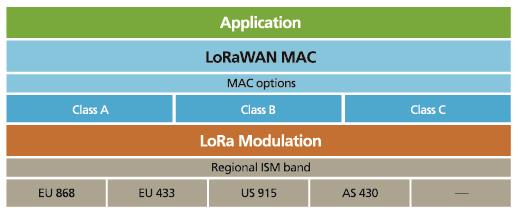“If you build it, they will come.” It’s a line best known from the 1989 movie, Field of Dreams, but applicable to many facets in life, including urbanisation. Cities are increasingly looking for ways to evolve and modernise as their population booms.
As cities evolve so there is a constant search for new ways in which technology can help build a proficient and sustainable infrastructure that adds value and reduces operating costs.
The goals of implementing smart city technologies are to improve quality of life for the public, to create efficiency, to reduce response times, address service needs, and to more efficiently use city resources. With real-time, data city officials and residents can more easily assess the efficiency of city initiatives and make improvements as necessary.
The Internet of Things (IoT) is proving transformational and with 5G on the tip of every developer’s tongue, the assumption is that it is a natural solution. But what if it wasn’t? What if there was another technology option that made more sense for certain use cases in smart cities?
We think there is - LoRa, a long range

wireless data communication technology, enabled by semiconductor chips that power very long-range transmissions with extremely low power consumption. A wireless transmitter’s battery can last for years, because the chips use such low amounts of power, reducing the need for maintenance and battery replacements.
LoRa networks operate on unlicensed spectrum that delivers secure, bi-directional communication, without the regulations and auction costs. But that doesn’t mean there aren’t protocols in place to ensure consistency and safety.
| Above: Vivek Mohan is Director of IoT, Semtech |
The LoRaWAN protocol is a unified protocol supported by the LoRa Alliance, an open, non-profit association of more than 500 global members including Alibaba, Cisco, IBM and Google – using an open, unified protocol to expand its reach.
LoRa at work in your city
LoRa Technology offers both technical and business benefits for smart city applications.
Smart city technology is one way that governments and cities provide sustainable services required to meet urbanisation demands. LoRa and LoRaWAN provide a highly flexible smart sensing and control infrastructure, which allows cities to collect and analyse data from thousands of connected devices in a streamlined manner. They can be installed in public, private, or hybrid networks, indoors or outdoors. And LoRaWAN signals are able to penetrate deep in urban installations.
Boston, Massachusetts, has more than 67,000 electric streetlights, the resources needed to provide consistent and constant light to its residents are significant. With over 1,600 control boxes and 32,000 manhole pull boxes, maintaining this type of infrastructure is expensive. Streetlamps represent a large portion of a city’s allocated energy budget, in some cases reaching upwards of 40 percent. Studies of energy grids estimate that a smart grid IoT solution using sensors, gateways and LED bulbs would provide large financial returns as well as valuable data. Having the ability to better manage these lights allows for reduced energy consumption, greenhouse gas emissions, and costs.
Through the LoRa network, sensors can be embedded in each street light, having the ability to control light functions as well as track usage data. The LoRa technology in the sensor connects the street light to a LoRa-based gateway, which aggregates data from all nearby street lights. The gateway sends information to a public or private Cloud server, where data is analysed by an application server that can ultimately control lighting and automatically send maintenance alerts for burnt out bulbs and other issues when needed. And all of this can be done on public or private networks – customers even have the ability to push over-the-air (OTA) updates to change between public and private networks as they desire thanks to the bidirectional communication that LoRa technology offers.

| Above: The LoRaWAN protocol is a unified protocol supported by the LoRa Alliance |
LoRa Technology can be implemented in a variety of ways, including:
• Smart parking monitors that show parking spaces available in a city to help reduce the traffic congestion created by people looking for a parking space.
• Traffic congestion, implementing smart traffic systems that can monitor traffic to better route automobiles and pedestrians. This is taking place now through smart traffic lights that sense traffic and coordinate light timing, but in the future, smart traffic systems could also include communication from lights to sensors in automobiles.
• Smart building systems provide data that ensures structures are maintained properly by providing a predictive maintenance system.
• Smart waste management systems can help detect garbage levels in containers to optimise the waste collection routes to maximise efficiency, cost effectiveness and cleanliness.
• As more people move to cities, noise and air pollution become a bigger challenge. Smart noise and air pollution monitoring can provide data that can improve citizens’ well-being and detect systemic health issue correlation.
LoRa and LEDs: A case study
Harbours are a prominent feature in port cities around the world. Recently, the yacht harbour of Tallinn, on the Baltic Sea, put the LoRa technology to the test.
Haven Kakumäe provides pontoon docks, a vessel hotel, administrative building, catering establishments and a children’s sailing school, making it a complete and modern maritime centre.
The LoRa installation is being tested throughout the port’s luminaires, controlled remotely through a LoRaWAN network and using Luminaire controllers installed on 45 outdoor lamps. The Luminaire Controllers were connected to the LoRaWAN Gateway over the radio, which is situated at the harbour, but the connection is also supported by other near gateways. The fully secure IoT Hub platform visualises encrypted data from the end-nodes via LoRaWAN backend.
Connecting lights via LoRa allows for autonomous operation based on configured lighting profiles, enabling the marina to take a low energy consumption and low-cost approach to its lighting system. Although the harbour is still testing the full solution, the LoRa-powered controllers are already providing better real-time control and consistency over lighting. The ability to monitor light intensity, work mode and movement means that unnecessary over-lighting can be avoided.
Implementing this latest lighting design allows Haven Kakumäe to set the stage for what future ports could ultimately look like. More so, safety is not compromised. In addition to transmitting data over the fully secure platform, the marina’s access control systems allow for flexibility and real-time notifications and alerts for any possible unauthorised activities. To address security concerns, Semtech’s technology ensures that no one person has access to root keys, devices cannot be copied, and device owners are the only entities that have access to sensor data. It also can run on a private network to give providers more control, visibility and security over data.
A good idea
LoRa can be especially helpful in increasing value and reducing investment in infrastructure and maintenance thanks to its flexible low-power technology, as well as building public or private networks over long ranges.
Imagine thousands of sensors that have been implemented in streetlights, then imagine the nightmare of having to replace the batteries in those sensors multiple times per year. Due to LoRa’s low power draw, batteries on sensors can last for years – significantly reducing the investment of time, cost and manpower needed to perform that maintenance.
Beyond that, LoRa’s flexible and scalable architecture that runs on the unlicensed spectrum means you can build a long-range public or private network quickly and easily. This reduces the amount of investment required to build out necessary infrastructure for a network to support IoT technologies. And with the bi-directional communication and OTA updates that LoRa enables, changing a network from public to private, or vice-versa, can be done with a simple push update.
Combine this with long-range sensors that can connect up to 30 miles in rural areas, or across miles of densely populated urban or deep indoor environments, and the potential value of LoRa becomes readily apparent.













